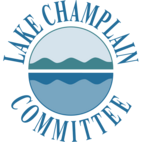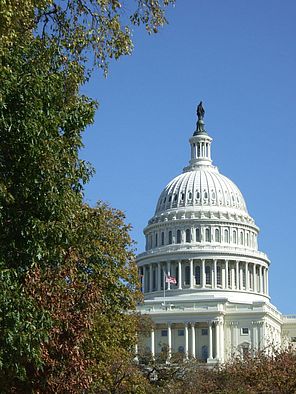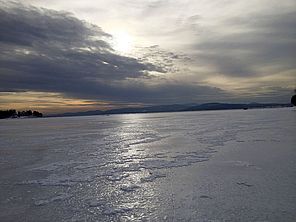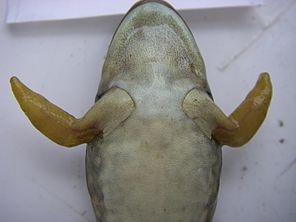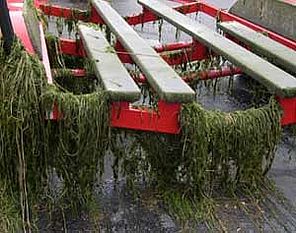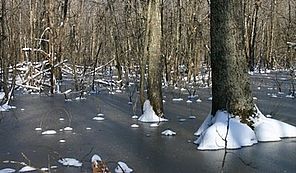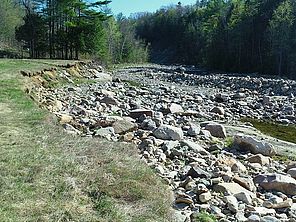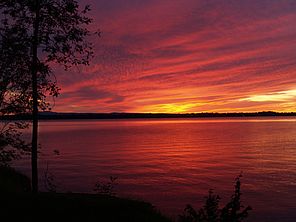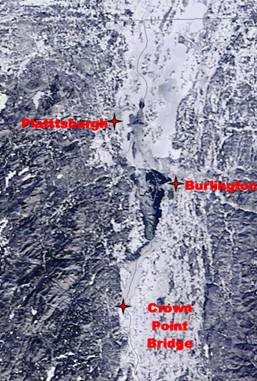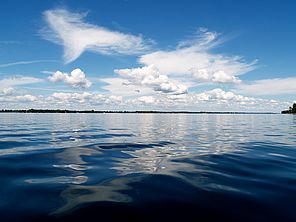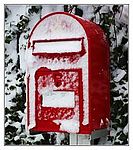Lake Champlain Clean-up Funds Take a Hit
The Environmental Protection Agency (EPA) portion of Lake Champlain restoration funding was cut by over a million dollars, from $2,432,000 in 2013 to $1,399,000 for 2014. For over 20 years these annual federal appropriations have supported critical restoration, research, and monitoring programs on the lake. These monies have helped reduce nutrient loading, identify and clean up toxic hot spots, and stop the spread of invasive species.
Designated water programs took a hit overall. The budget for the Great Lakes program was reduced by 1%, Puget Sound received an 18% reduction, and San Francisco Bay and the Gulf of Mexico programs were cut by 19%. Only Chesepeake Bay got a funding boost with clean-up funds increased by 21%.
Disappointingly, Lake Champlain funding was reduced by 42%! This is particularly worrisome because EPA is about to release a new clean-up plan for the lake that will require many millions of dollars to implement. LCC will continue to advocate for state, regional, and national funding to protect and restore lake health. We will work to ensure that available funds are spent wisely and target the most important sources of pollution. Stay tuned for future alerts on how you can help.
LCC and EPA Call for More Detail & Deadlines in VT’s Lake Clean-up Plan
In late November Vermont released a new “Proposal for a Clean Lake Champlain”. The public comment period for the proposal ended on January 17th. LCC and EPA were among 42 individuals and organizations to weigh in on the state plan.
LCC noted that the state “put forth a robust suite of activities that will go a long way to better managing water resources.” However, the proposal offers “no indication of the amount of phosphorus load reductions that can reasonably be anticipated from each strategy,” and the lack of such analysis makes it “impossible to conclude that the plan offers a reasonable assurance of meeting water quality standards.” We called on DEC to provide more detail both as to expected pollution reductions and steps needed to implement the plan.
EPA’s comments were similar to LCC’s. In a nine-page letter, EPA praised the proposal as, “broad in scope and ambition, appropriately reflecting the challenge of restoring the health of Lake Champlain,” but noted that the proposal “lacks the specific details of what will be done when.” They also noted that climate change needs to be addressed throughout the plan. Continue reading on LCC's website
Pharmaceuticals in Water
Drugs are making their way from our medicine cabinets into our waters, and traces of pharmaceuticals have been found in the environment. Drugs may pass through our bodies unchanged or unused pills may be dumped down the toilet. Wastewater treatments systems were not designed to remove pharmaceuticals, and their ultimate environmental fate is unclear.
The first broad look at the pharmaceuticals in the United States occurred in 2002. Researchers from the U.S. Geological Survey sampled for traces of 95 widespread chemicals from 139 rivers in 30 states, and found evidence of the substances in 80% of the waterways. The average river contained seven different chemicals. Since then the number of potential contaminants has increased, but little else has changed. Continue reading on LCC's website.
Lake Champlain Refuge Frogs Included in Nationwide Survey on Abnormalities
Amphibians with missing or misshapen limbs have triggered public and scientific attention and concern for over two decades. To help provide a better understanding of the extent of the problem, the USFWS conducted a nationwide-study of frog abnormalities over a ten-year period. From 2000 through 2009 they assessed 62,947 amphibians from 462 sites at 132 National Wildlife Refuges.
Results from the landmark study were recently released and reveal some good news. Average abnormality rates such as missing or shortened limbs were around 2% at all sites with roughly one-third of collections having no abnormal individuals. The study included three sites at the Missisquoi National Wildlife Refuge, the only National Wildlife Refuge in the Champlain Valley. Abnormality rates were not notably higher than the national average at these sites.
Hot spots for abnormalities were discovered in California’s Central Valley, Alaska, and in the lower Missisippi River area. Many different potential causes have been suggested for the abnormalities, including pollution from industry or agriculture, parasites, ultraviolet exposure and naturally occurring heavy metals leaching into water bodies. Causes may vary from place to place. Click here to read the study. Continue reading on LCC's website
New York Proposes New Regulations To Stop Invasive Species
The New York State Department of Environmental Conservation (DEC) is proposing new regulations to prevent the introduction and spread of aquatic invasive species (AIS) at DEC boat launches. The proposed regulatory changes will require boaters to remove all visible plants and animals from boats, trailers and associated equipment and to drain boats before launching at or leaving a DEC boat launch.
LCC endorses the new requirements as an important step in combating invasive species. “Efforts to prevent species from moving from one waterbody to another are critical. Once invasive species become established, elimination becomes impossible. The proposed regulations clearly reduce such risks,” noted Staff Scientist Mike Winslow. Continue reading on LCC's website
Celebrate Wet Wonders on World Wetland Day
February 2nd is World Wetlands Day, a day to raise public awareness about the importance and value of wetlands.
There are countless flooded forests, marshy swales, and peaty bogs throughout the Champlain Basin which help to prevent major floods from occurring downstream and provide important habitat for fish and wildlife. When torrents of spring snow melt come rushing out of the Adirondack or Green Mountains, rivers rage and lake levels rise. Rivers and lakes leave their normally disciplined beds, and spill water throughout the surrounding landscape. Wetlands then play the role of calming mediator. They accept the water and hold it serenely, relinquishing it back to the river over the course of days or weeks.
In calming and holding excess river water, wetlands do more than prevent floods; they also serve as traps for whatever debris the river carried and for whatever pollutants may have been clinging to the debris. As water leaves the banks of streams it loses energy and slows. Without energy, the water cannot carry its load of sediments. Larger particles are deposited close to the stream bank creating a sandy ridge or berm along the river shore. Water that passes over this sandy ridge is trapped behind the berm where finer sediments can settle out. In this way, silt that would have muddied the waters of Lake Champlain and carried a load of phosphorous to the lake is deposited in more upland settings.
Wetlands offer many benefits for people, but perhaps their greatest service is to wildlife. A host of fish, birds, and mammals depend on wetlands for all or part of their life cycle. Northern pike spawn in wetlands; waterfowl breed and mink hunt frogs and fish in marshy areas. Animals are attracted by the abundance of food and cover in wetland areas. Furthermore, since few people are willing to wade through thigh deep water with a swarm of biting flies around their head, wetlands provide animals a refuge from human encroachment. Continue reading on LCC's website
LCC Identifies Lessons From Irene
LCC has been hard at work producing a suite of pamphlets illustrating lessons from Tropical Storm Irene. The pamphlets will soon be available on LCC’s website and we are actively seeking opportunities to present our conclusions to interested audiences. If your town’s conservation commission, selectboard, or planning commission might be interested in a presentation please contact Mike Winslow (mikew@lakechamplaincommittee.org) to arrange a time.
The lessons examined include:
1) Berms create a false sense of security; removing them can help reduce flood damage.
2) Wide floodplains store water and help minimize flood damage; berm removal increases river access to floodplains.
3) Floodplain development puts entire communities at risk; National Flood Insurance Program maps don’t offer sufficient protection.
4) Advance planning to accommodate floods pays off; FEMA money can help with planning.
5) When emergency measures create future dangers, go back and fix them.
6) Consider whether you really need to rebuild everything.
7) Constructed ponds can pose a hazard.
The project highlights case studies of good and bad river management and each lesson is accompanied by concrete examples. The examples are mostly drawn from Rutland and Addison Counties in Vermont, but applicable throughout the Lake Champlain Basin.
Paddling Pictures Wanted
While the lake bays are covered in ice and water temperatures hover in the 30s, LCC staff are looking ahead to paddling season. We'd love to see your photographs from paddling adventures, visits to trail sites, and other lake outings for use in upcoming publications. We are especially in need of shots of people having fun in and around the water. You can email high quality jpegs our way at lcc@lakechamplaincommittee.org. Please title your pictures with the date, photographer and location and let us know if we can use them in our online and print publications.
LCC Legacy Fund Exceeds Goal
Hats off to everyone who helped grow LCC's endowment by contributing to the Legacy Fund campaign! The campaign was initiated by LCC member Cliff Landesman who wanted to do something significant to celebrate his love of the lake and longstanding involvement with LCC. "Reflecting on 25 years of friendship with LCC and the lake, I wanted to do something special, something I can't afford to do every year, to recognize how much the lake means to me", Cliff noted. "I decided to offer an incentive to help LCC raise additional funds by doubling gifts up to $10,000." Thanks to Cliff, another anonymous donor who extended the match, and hundreds of LCC members, we raised over $30,000.
"We are deeply grateful to everyone who participated in the campaign", said Executive Director Lori Fisher. "The money raised builds our capacity and will help sustain future efforts to protect and restore water quality, safeguard natural habitats, provide access, and foster stewardship."
If you care about the lake and want to invest in its future you can still make a contribution to the Legacy Fund. Just visit our secure website to make an online donation or contact Executive Director Lori Fisher (802 658-1421) about making a dedicated gift. Our sincere appreciation to everyone who has donated so far: Anonymous (27), Peter and Susan Alden, Lisa Alther, Ed Amidon and Louise McCarren, David and Kathryn Anderson, Paul and Anne Bakeman, Jeffery Baldwin, Allison Barlow and David Ochshorn, Barton Family Lookout Lodge, Ltd. , Carolyn L. Bates, Honora Bechard, Rick Beck, Eleanor G. Berger and Mike DiNunzio, John and Maria Bialas, Jeff and Jane Birnn, Eugenia Bishop,Continue reading on LCC's website
Nature Note - Ice Cover Report
The area of open water on Lake Champlain has been steadily closing with the frigid winter we have had. Birder Ian Worley reported that the ice front moved northward 18 miles between January 22 and January 24, from near D.A.R. State Park in Addison, Vermont to New York's Split Rock area. Birders are attracted to the ice edge to search for unusual ducks or gulls. At Kingsland Bay recently, the inner portion of the bay was covered with large sheets of pancake ice cemented at angles with each other, while the outer bay had clear sheet ice. Lake Champlain hasn’t frozen over completely since 2007. Might it happen this year?
Cold temperatures lead to expansion of ice sheets and tension between the already locked water molecules. The tension can produce odd sounds. Andreas Bick, a composer and sound artist, recorded the sounds of the ice sheet on a lake in Berlin, Germany sounding eerily similar to the weapons of the Star Wars battle ships. Loud snaps can occur when a slight amount of pressure, such as from a person walking on the ice, is added to tense ice.
Take a Look at the Lake
Lake Champlain is breathtakingly beautiful. Spread that beauty around with the purchase of LCC's stunning new photo cards. An eight-card set includes two cards each of four different arresting scenes and costs $10 for members, $14 if you haven't joined yet. (Shipping and handling is extra.) The cards are printed on high quality, 100% recycled card stock and come with matching envelopes. View all four scenes on our website and purchase them online, download our mail-in-order form, or call us at 802 658-1414 and we'll process your order. Proceeds from any note card purchase supports LCC's work for a healthy, accessible lake. Many thanks to photographers Carolyn Bates, Trip Kinney, Lisa Liotta, and Philip Mongeau for generously sharing their lake pictures with LCC!
Moving? Changing Email Addresses?
If you’ve changed your address recently, please send us an email so we can update your files and ensure you receive news on lake issues and LCC’s work. Email is our primary form of communication with members. Mailing electronically saves time and resources and reinforces the stewardship ethic of our mission. We don’t give away or sell email addresses.
To ensure you receive email from LCC, please add lcc@lakechamplaincommittee.org and the domain enews.lakechamplaincommittee.org to your safe/allowed list and address book. Thanks!
Lake Champlain Committee Board of Directors
Gary Kjelleren - Chair (South Hero, VT), Sharon Murray - Treasurer (Bolton, VT), Alan Booth (Plattsburgh, NY), Sandy Montgomery (Montreal, QC), Ann Ruzow Holland (Willsboro, NY), Mary Van Vleck (Charlotte, VT), Chuck Woessner (Grand Isle, VT).
Lake Champlain Advisory Council
Megan Epler Wood (Burlington, VT), Steven Kellogg (Essex, NY), Peter S. Paine, Jr. (Willsboro, NY), Mary Watzin (NC).
Lake Champlain Committee Staff
Lori Fisher, Executive Director
Jessica Rossi, Office Manager
Mike Winslow, Staff Scientist
